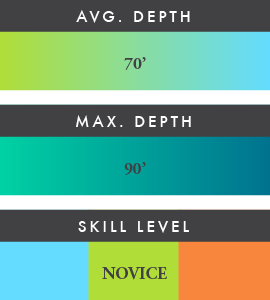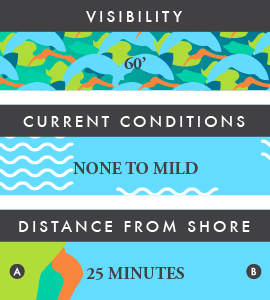Ambergris is the largest and most popular of the offshore Cayes, with 25 miles of Belize’s spectacular barrier reef sitting less than a mile offshore. The calm waters are full of spur-and-groove reefs with deep canyons, swim throughs, and reef cuts. With visibility up to 100 feet, the coral reef is teeming with abundant and colourful life. Depth ranges on the barrier reef are between 50 to 200 feet of water, with dives averaging 60 feet with 45 minutes of bottom time. Divers can see a great variety of soft and hard corals and many different species of swimming and crawling marine life such as the Nassau Grouper, Angel Fish, Lobster, Crabs, Morey Eels, Rays, Nurse Sharks, occasional Reef Sharks and Turtles.
There is a great range of local dive sites available, from anywhere between a five minute and a fifteen minute boat ride from the dive shop, suitable for a variety of divers. All of the dives that we do on the barrier reef are drift dives. Belize does not allow the use of anchors on the reef, so we moor up on a mooring line, where you will come to the back of the boat and get into your equipment and use the back roll entry into the water. We use a float line to the back of the boat for divers to hold on to while the rest of the group enters of the water. Once everyone is in the water, you descend and start the dive, led by a guide. Our two tank dives last between three and three and a half hours dependent on group size.
Local Dive Sites
Pescador Canyons
While diving at Pescador Canyons, you will be able to explore under the reef as well as above it. This site has a hidden tunnel through the coral, formed by the over lapping of the spur and groove formation that is abundant here in Ambergris Caye. Your guide will lead you through the shallower portion of the reef to the entrance of the secret swim through. You will dive through the tunnel to exit at 75 feet, where you will be able to see how deep the canyons can reach. Keep your eyes open for some of the turtles and rays that Ambergris Caye has to offer! This dive site gets its name from its location, as it is in front of the Pescador Resort
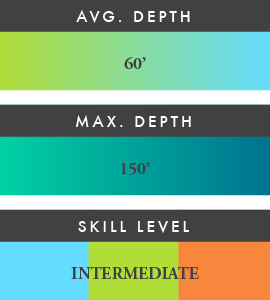
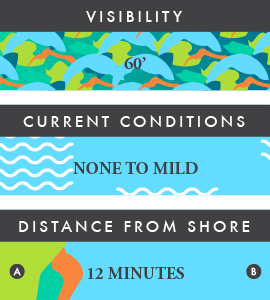
M&M
This dive site was named after the first couple in San Pedro to have an underwater proposal! Come and see the dramatic spur and groove canyon formation that is famous here in San Pedro. The canyons vary in depth, giving a greater scope to the marine life visible here. This dive averages between 70-90ft. Things to look out for on this dive are the grouper and jacks as well as the pelagic such as turtles and eagle rays.
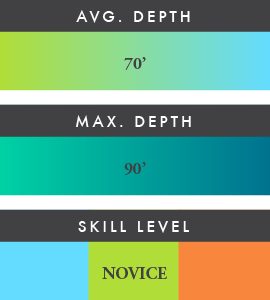
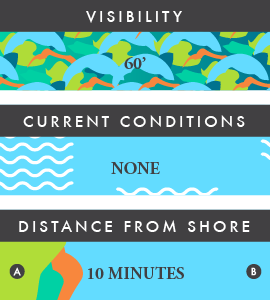
Love Tunnels
If you enjoy swim throughs, then this is the dive for you! This dive has three tunnels; two short and shallow tunnels and a finally deeper and longer tunnel. The first two tunnels are at an average depth of 60ft, they are close together and lead you to an area of dramatic canyon formation where you can see the spurs of the reef coming together to form archways. From these two tunnels under an archway leads to the second tunnel. This tunnel is longer and curves to a depth of 80ft at the base of the canyons. It is said that two underwater weddings have allegedly taken place here, hence the name.
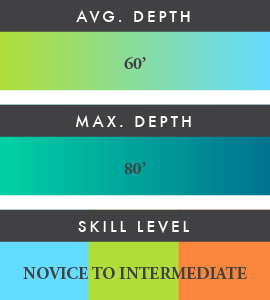
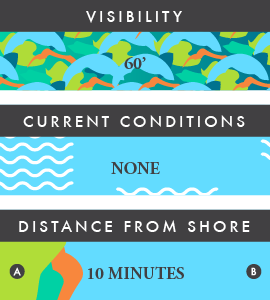
Chimney
Named after its resemblance to a chimney and fireplace, this dive has a swim through that opens up into a large cavern and exits at 85ft. Sights here beyond the vase and barrel sponges and array of coral whips and fans are the chances to see the marine life common to the area such as the Green and Hawksbill Turtles as well as the Nurse Sharks and Sting Rays.
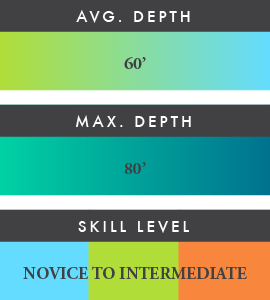
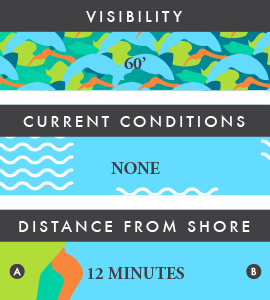
Tackle Box
This dive displays the best of Ambergris Caye’s spur and groove formation. The maximum depth on this dive can reach 100ft where the dive opens into a wide sandy bottom, here you can see the drop off into the blue, this is also where sightings of the Caribbean Reef Sharks are common, as well as Nurse Sharks, Spotted Eagle Rays and assorted Turtles. This dive site is also where you can explore some of our many swim throughs, the dive steps up after the swim through and the rest of the dive is spent in an average of 60ft on the edges of the spur and groove canyons, keeping an eye out for the passing marine life. The dive ends in around 50ft of water before ascending to 15ft for the safety stop.
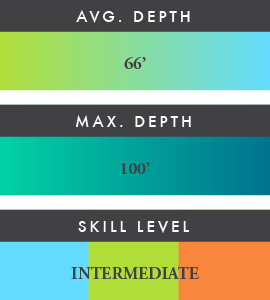
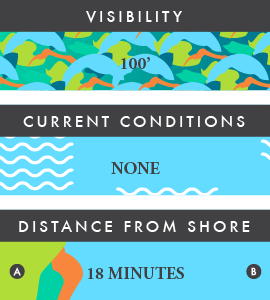
Esmerelda
The Shark and Ray Alley for divers, this has been a feeding site for over 30 years, small sardines are placed in bottle and released in small amounts on this dive so divers can see the nurse sharks in all their glory. This dive takes place in a wide sandy bottom at a depth of 55ft, here the divers are arrange in a semi-circle on the sandy bottom and are reminded to keep still. The releasing of sardines can attract nurse sharks from between 4-8ft as well as big grouper, snappers and Green Moray Eels, the feeding will last for 15-20 minutes, the rest of the dive is spent exploring the reef. This dive is usually the second dive of the day due to the depth.
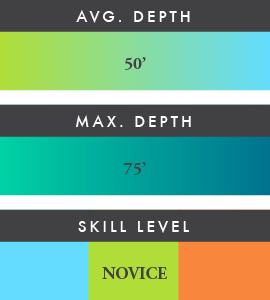
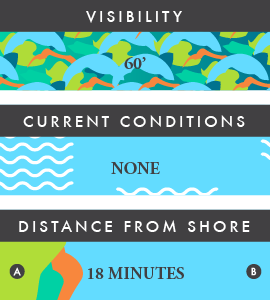
Cypress Tunnels
Cypress Tunnels is on the south side of San Pedro close to the Hol Chan Marine Reserve. On this part of the reef the canyons are deeper and more dramatic than some of the dives closer to the heart of town. This dive can include just the canyons which are spectacular in themselves, or for those who are looking for a slightly deeper dive then there is also a tunnel through one of the canyons starting at 60ft and exits at 75ft, at the base of a canyon. This area is excellent for some of the macro marine life as well as large Groupers and Snappers.
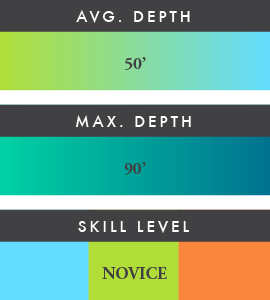
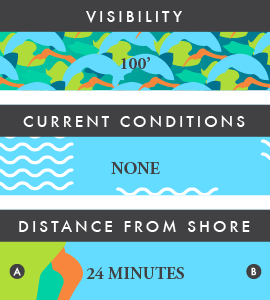
Victoria Canyons
This dive is another dive site on the south of the island. It offers a dramatic view of the spur and groove formation and the dive can be either shallow or deep dependent on your preference. There is also a swim through for those who wish to do a deeper dive exiting at a depth of 90ft.
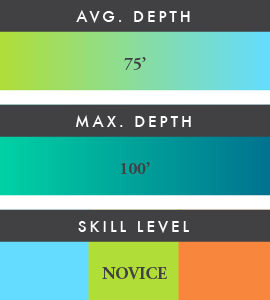
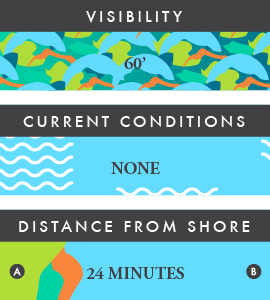
Tres Cocos
Tres Cocos is a spur-and-groove reef with deep and locally narrow canyons running perpendicular to the reef line. The coral spurs crest at 50-80 ft whereas the sand-floored canyons fall off rapidly to depths of 110 ft. Like a giant plowed furrow, the canyon and coral formations run straight and true. If you follow the mooring line down it will lead you to a spur covered with a forest of soft corals swaying to the rhythm of the ever-present wave surge. This is the spot where the sea turtles can be seen during mating season.
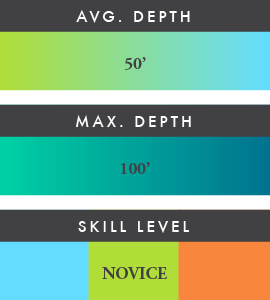
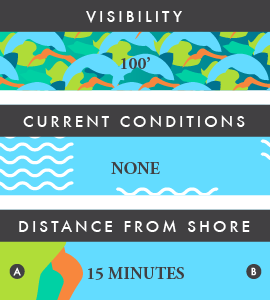
Devil’s Canyons
This is a steep canyon, with a wall of 60′-150′. Diving this wall is impressive as the drop off is quite steep as you descend. The marine life is vast here, with chances to see many species of fish, coral and other creatures.

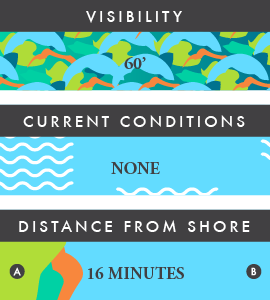
Mexico Rocks
Mexico Rocks is the newest marine protected area in Belize! The water is on average ten to twelve feet deep with excellent visibility inside the reef. This area is a patch reef within the Northern Shelf Lagoon and has over 100 clusters of massive Boulder Corals. These coral formations are rare in Belize and are known to occur in only one other area, off of Glover’s Reef, far to the south.
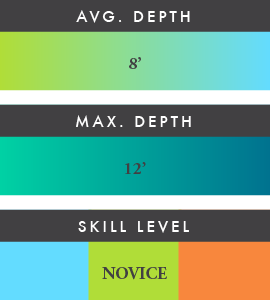
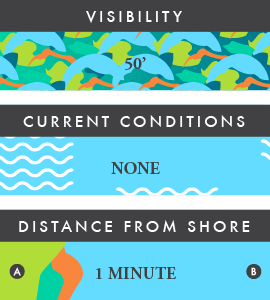
Hol Chan Marine Reserve
Hol Chan is Mayan for “Little Channel.” This sanctuary was officially established in 1987, and since then the return of all species of fish has been quite dramatic. The reserve covers approximately 21 square miles and is divided into four zones. The entire reserve focuses on a cut through the reef which is little more than 25 yards wide and 30 feet deep. This is a steep channel through the reef, with all kinds of marine life.
- Zone A includes the reef and is covered with almost every type of coral found in the Caribbean.
- Zone B is an area of sea grass where turtle, conch and even the remarkable little sea horse are found.
- Zone C comprises the mangroves on the southern tip of the island.
- Zone D was added in 1999 as Shark & Ray Alley.
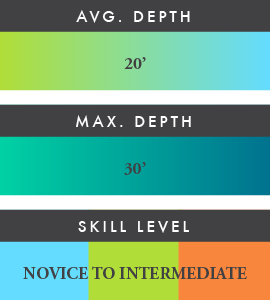
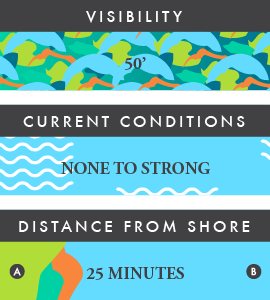
Hol Chan Night Dive
One of the few places along the Barrier Reef suitable for night dives. Guides supply lights – marine life supply their spectacular plumage and colors which are only viewable during night dive excursions!
Pillar Coral
Pillar Coral is a spur-and-groove reef under the protection of Hol Chan Marine Reserve. Large schools of yellow chub, bar jacks and yellowtail snapper patrol the water above the reef. On some days, schools of more than a dozen spotted eagle rays pass through. The name of the dive comes from the huge pillar corals found at this site and the abundant fish life that live around these coral formations.
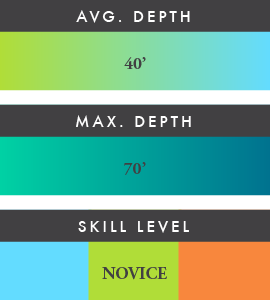
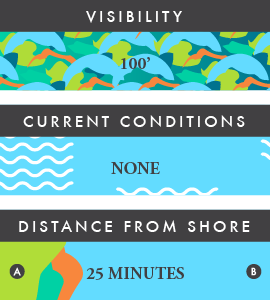
Eagle Ray Canyon
This site is also just outside the Hol Chan Marine Park Channel and falls under its protection. Due to tidal current, we often meet schools of spotted eagle rays. The reef itself is accentuated by huge barrel sponges and a variety of big groupers.
